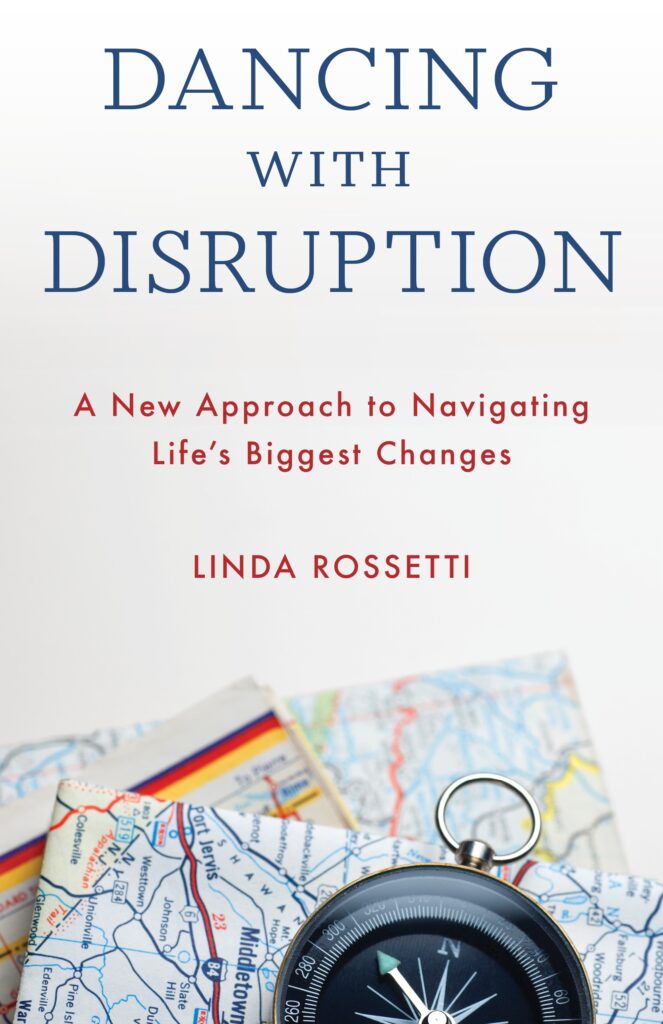“It took a lot to come here today,” says Janelle, a forty-one-year-old nurse who sits opposite me in a small conference room.
This morning she and four others joined me for coffee to talk about major changes in their lives. A digital tape recorder sits in the center of the table beside a tray of uneaten breakfast pastries.
“For the first time – I think ever – I am asking myself, ‘What do I want to do?’ ‘Who do I want to be?’” Janelle takes a breath, looks at the others around the table, then adds in a near whisper, “I get this feeling that there is more for me.”
The others smile and nod in encouragement.
“This is not easy. I’ve been going through the paces in my life, trying to not let my anxiety take over. I’m finding it harder and harder to show up.”
She looks straight at me, and says, “I am grateful for this conversation because no one else gets this. I have never felt so alone.”
The others follow in turn with their own stories of upheaval.
As I listen, I hear commonalities in the way they tell their stories; in the emotions like anxiety and disbelief that take over, and in the impact that these experiences have on their sense of self. These patterns feel shared even though the group differs in age, profession, and circumstance. What is even more striking is that each of these capable people talks about their experience of upheaval as if they are the only ones to encounter it.
I keep wondering to myself as I sit there, Why is no one talking about this?
I mark that morning’s conversation as a turning point in my life. From then on, I set out to understand times of upheaval in adult lives and, more importantly, how individuals, like Janelle, might respond.
This desire to understand drew me to hundreds of other individuals in conference rooms and coffee houses across the nation. Those who joined me brought me to their most important moments with stories of both pain and triumph.
The generosity of these strangers helped me learn an extraordinary amount of what is happening for Janelle, and others like her, and shaped what I now know as a transformative opportunity available to adults everywhere.
I credit these individuals with something else, too. The practice of hearing their stories felt like scaffolding to me at a time when I too felt buffeted by uncertainty. Thanks to their gift, I pay it forward with their stories, and my own, about a problem that has no name. Dancing With Disruption introduces new thinking about what is happening when we encounter a crossroads in our lives. It does not stop there. It empowers us to respond differently at such times by walking us step-by-step through a research-based toolkit. With the toolkit’s four techniques, including HAILTM, we learn to transform the isolation and uncertainty so common at a crossroads into optimism, excitement, and the confidence to make choices that previously felt unimaginable.
HAILTM, a mnemonic technique, invites us to Honor our emotions, Ask ourselves about them, consider their Influence on us, and wonder what we might Learn from an emotion’s presence. These four steps work on many levels to shift the power away from an emotion’s hold over us. Through it, we reframe our relationship with an emotion and infuse that relationship with new meaning.
Reframing is a word that is widely used but merits a quick discussion. Imagine I asked you to draw a picture of an elephant as if it were standing three feet away from you. Next, imagine that I asked you to draw that same elephant, only this time, imagine I asked you to do so from a hot air balloon floating high above the Serengeti. How you see that same elephant from these two vantage points differs. This is reframing. HAILTM enables us to take something familiar, like a relationship with anxiety, and see it through a new lens.
HAILTM can be a useful tool if used “in the moment” we are experiencing an emotion and if used “upon reflection” at some point after the emotion is activated. I was thankful to be a HAILTM power user recently because it helped me reframe an emotion in real time. Without HAILTM, I would have stewed about this experience for longer than I would like to admit, a response that would have sapped my energy and led to all sorts of other work and non-work-related stress.
Before the pandemic, I was awarded a consulting project to lead “talent” integration for a major acquisition at a large, publicly traded company. There were six other executives involved in the integration, many of whom I knew and had worked with in the past. Each of us had a single area of responsibility: sales and business development, operations, finance and administration, research and development, technology, and talent. One day, we held a day-long meeting with the company’s CEO and CFO to review the plans and work through unresolved issues.
One executive, Peter, the IT lead, was antagonistic toward me throughout the project. This day was no exception.
Here is how the meeting unfolds.
Every time Peter speaks about an area, he references the lead person’s name. For example, “Jack has more to do before IT can integrate the customer relationship management (CRM) system….” Whenever he references the area of talent, my responsibility, he avoids naming me. He instead refers to talent. “Talent feels uneven,” or “Talent still needs to address that issue.”
I am stunned by his behavior. I get angrier and angrier as the morning wears on. How dare he? I think to myself. Peter sits four feet away from me, but he avoids all eye contact. How is that even possible? I wonder. My anger notches up every time he opens his mouth. I am not someone who carries anger often, so anger feels raw and urgent.
We break for lunch. It is served in an adjacent conference room where there are high tables large enough for a person or two. I grabbed one of the deli sandwiches from the café cart and claim a table near the window. I open my laptop as if responding to an email, grateful for this decoy. I know I need to create space between myself and my anger. I use HAILTM in hopes of reframing my anger before we reconvene after lunch.
This is how my internal conversation goes.
I Honor the emotions that come, including anger, disbelief, and self-doubt. What more can I say? I am hopping mad that he blatantly refuses to acknowledge my presence. He never once makes eye contact with me. Anger surprises me. I am not someone who gets angry often. Disbelief is knit together with anger. How can this be happening?
Self-doubt rolls in silently, like a fog. Try as I might to rise above this, anger pitches me off balance, leaving me vulnerable. While I am not sure it is an emotion, this fog separates me from the others. No one else sees it. Not the CEO, who is my long-time colleague and champion. Not the others. This feeling of separation fuels my self-doubt. Am I really seeing this? Am I making too much of his behavior?
I Ask myself about the anger. Why was it showing up? Why here? Why now? I instantly link Peter’s behavior to disrespect. I bring orders of magnitude more experience than he does to the table. My anger is tied to his willingness to look through that. While interesting, I feel as if there is more to this.
I invite you to pick up Dancing with Disruption to finish “Ask” along with the final two letters, “I” and “L” and to hear how I get from this state of overwhelm to the following description which closes this story at the end of using HAILTM:
I am euphoric. I smile to myself as the meeting draws to a close, fully anchored in an entirely different place than I was only hours earlier. As I make my way from the conference room, the CEO excuses himself from another conversation to come over to talk with me. “That was a terrific conversation. Thank you for being here.”

Dancing with Disruption, available May 5, 2023, introduces HAILTM and four other techniques that are designed to support your success in navigating personal and career shifts. Take a moment to order your copy NOW and visit author Linda Rossetti’s website to learn more.


